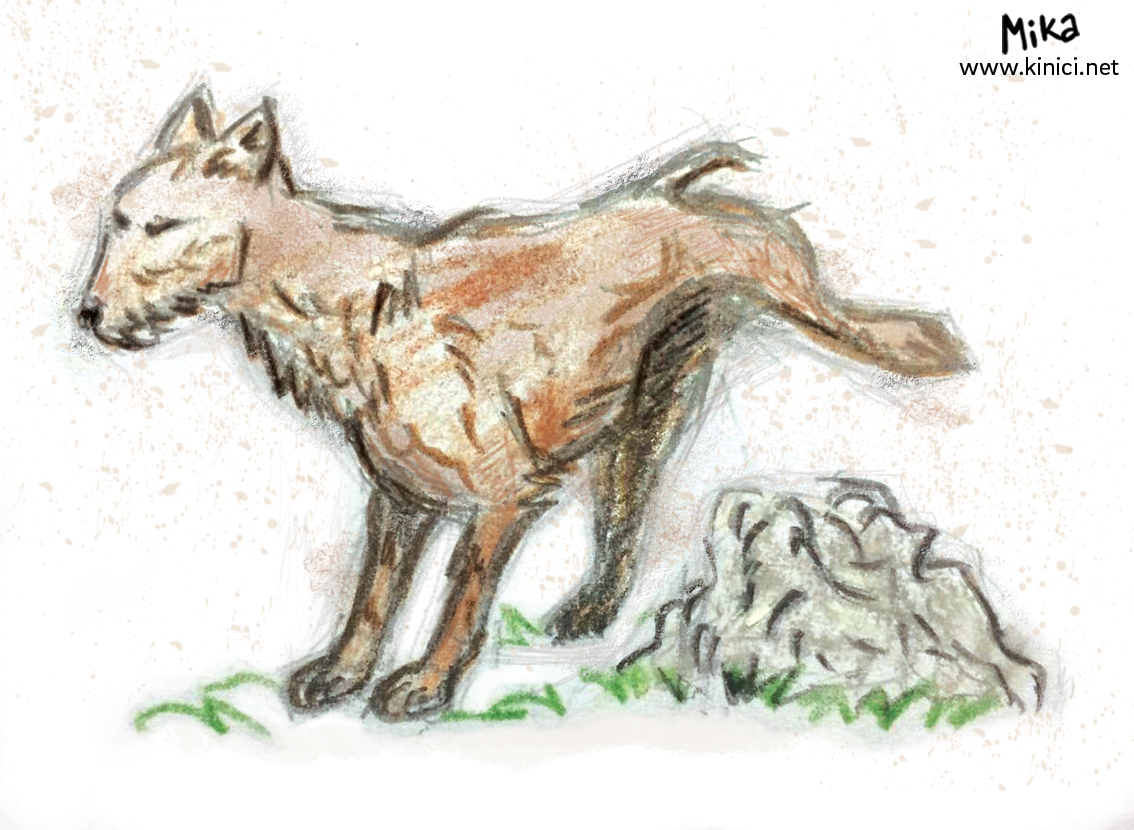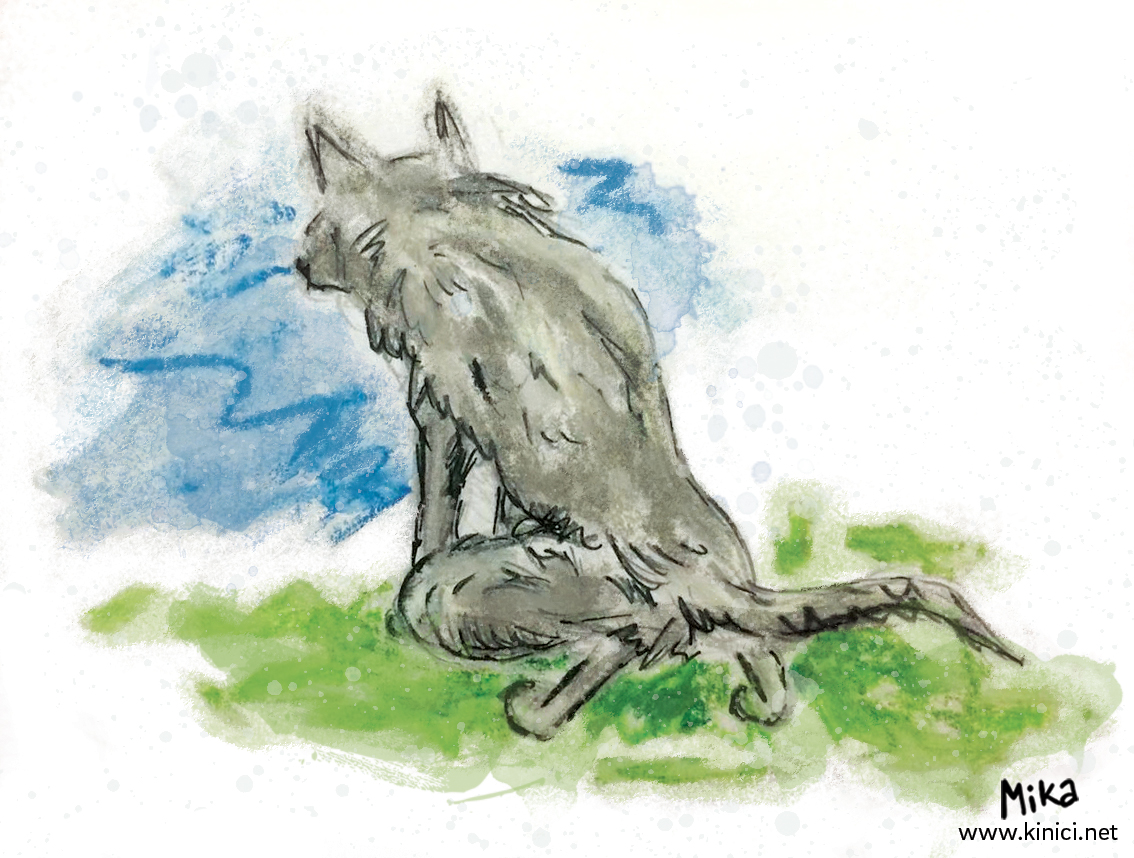They are good territory defence system from intruders and contain more information than the howl. Scent marks are left by urinating (spraying urine), defecation (faecal discharge) and scratching the surface since there is scent between animal's toes.
 Scent marks fade and get lost which is why it is important to renew them. Durability of the urine scent lasts 2–3 weeks maximum. That signal can tell how many animals passed that path and which pack do they belong to. If it is a stone, for example, member of a rival pack will mark the other side of the stone to reinforce territory boundaries.
Scent marks fade and get lost which is why it is important to renew them. Durability of the urine scent lasts 2–3 weeks maximum. That signal can tell how many animals passed that path and which pack do they belong to. If it is a stone, for example, member of a rival pack will mark the other side of the stone to reinforce territory boundaries.
On their territory, canids often mark places that are already marked by the members of their own species as well as by other predators.
 Males do so more often than females, marking unfamiliar objects, terrains or places they felt unknown scent. Male will spray eye-catching places like stones and trees, making sure to mark it at the highest point possible, making the detection easier, along with the fact that the scent that is above the ground will be carried by the air much further.
Males do so more often than females, marking unfamiliar objects, terrains or places they felt unknown scent. Male will spray eye-catching places like stones and trees, making sure to mark it at the highest point possible, making the detection easier, along with the fact that the scent that is above the ground will be carried by the air much further.
Wolves will leave their scent marks approximately on every 240 m. Those who are not territorial, that have left the pack or are migrating, do not leave these kind of marks.
Wolves leave marks inside their territory too, but hardly ever, and extremely rarely around the meeting point. As they go further from the meeting point they will mark the terrain more frequently, especially paths that are important to them. Edges of the territory are marked the most and most frequent with urine so it actually represents the border. They leave twice as much marks on the borders of the territory than within it. As they patrol and urinate they mostly stick to paths, roads, frozen waters, which are easier to go through.
